Bringing an early 1970s Japanese Econobox into the modern realm is no east feat, but this Datsun 1600 effortlessly melds the past and the present, with stylish results
Words and Photos: Richard Opie
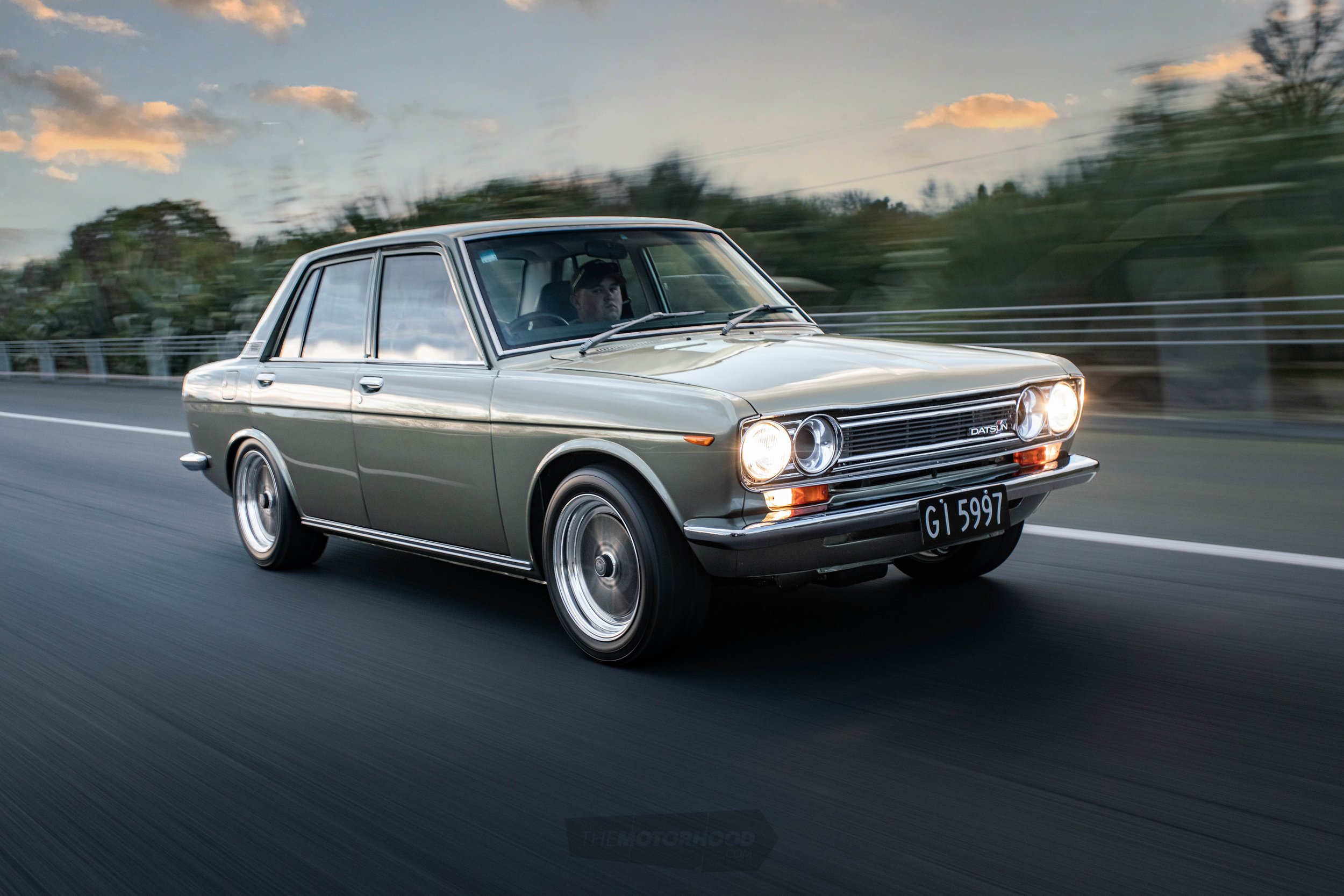
Retro-tech, restomod, pro-touring — whichever hyphenated moniker you wish to use for the particular box that epitomises a certain type of build, there’s a bunch of constants that runs innately like high octane through their respective fuel-line veins. Whatever the designation, and despite their finely nuanced differences, the style of each of these ‘automotive subgenres’ is, at its core, typified by a copious amount of modern tech being poured into a classic shell. In the import world, it’s only really starting to catch on, particularly on Kiwi shores and especially as an ethos applied to a build from start to finish. But under those deep, glossy coats of Nissan JW0 — and we’ll get to that — Andrew Fitzpatrick’s 1972 Datsun 1600, or 510 for those so inclined, does an impeccable job of melding the old with the new, in a considered package that’s built to drive as effortlessly as its timeless silhouette ages.
It’s tasteful, well-presented, classic Japanese fine dining; a well-curated multi-course degustation that satisfies the senses with every glimpse. Given Andrew’s nine-to-five, it makes perfect sense. He makes cakes for a living — bloody fancy ones at that — and you’ve gotta imagine it’s that attention to detail, knowing when to add just the right ingredients, that ensures he has the eye to get a scruffy old Datsun looking, well, delish!
Cakes and cars? They don’t sound like the most obvious of bedfellows; after all, cream and fuel are destined to curdle. However, Andrew’s car-guy creds run deep, way back to his days as a young fella, growing up in Hamilton amongst a family with just a little bit of car history. “My brother actually ended up getting into Minis,” Andrew explains of his teenage years, “and I ended up following suit.”
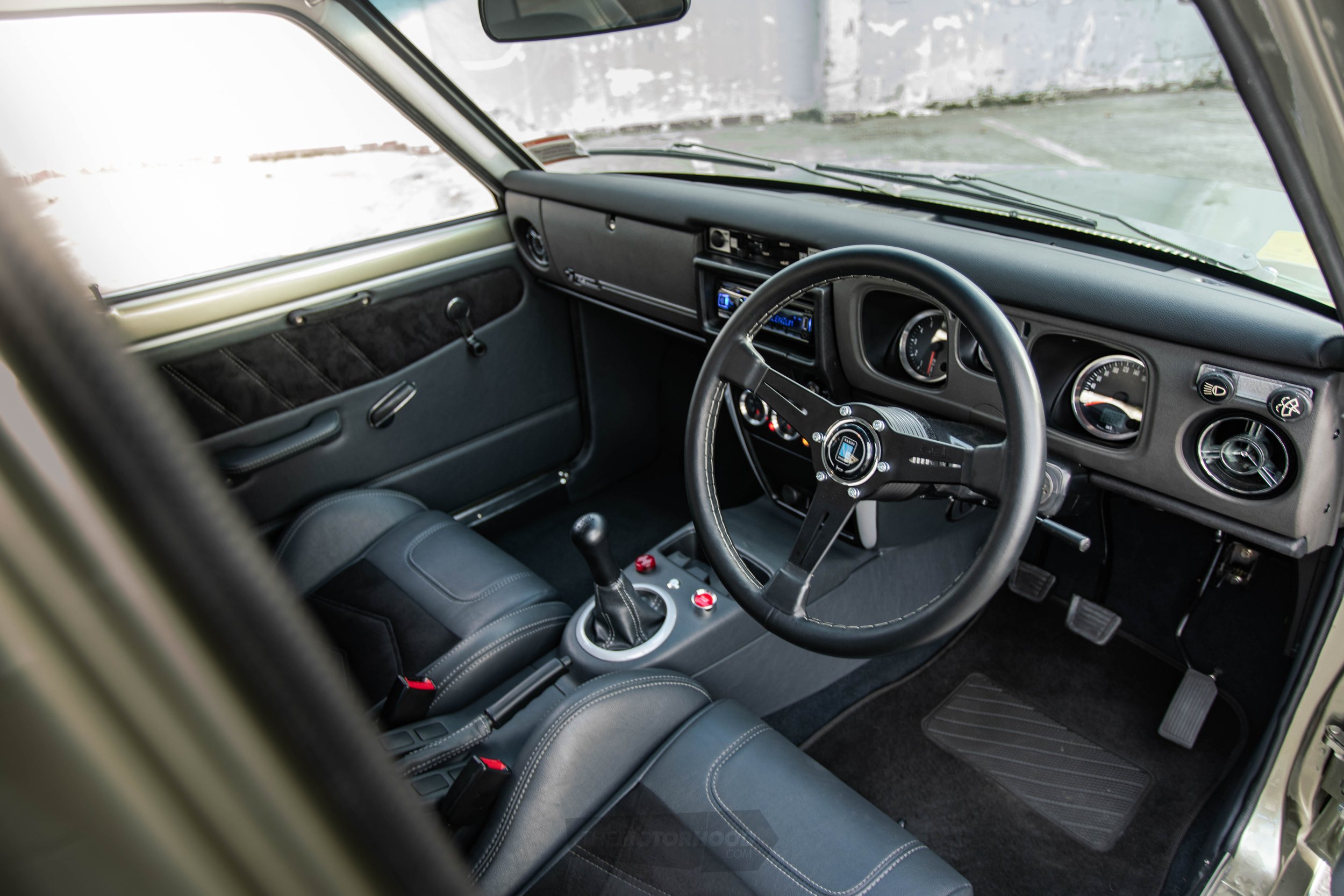
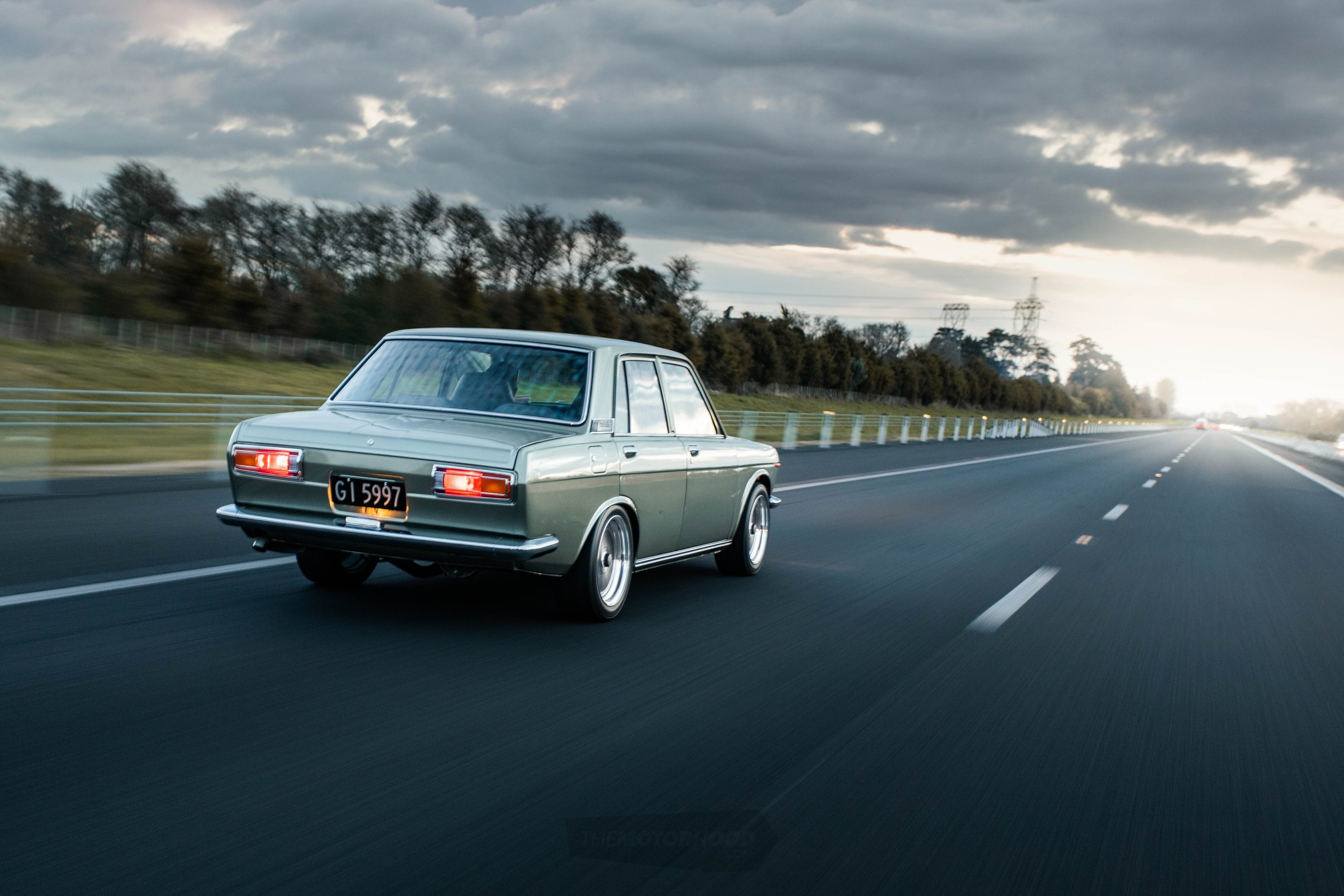
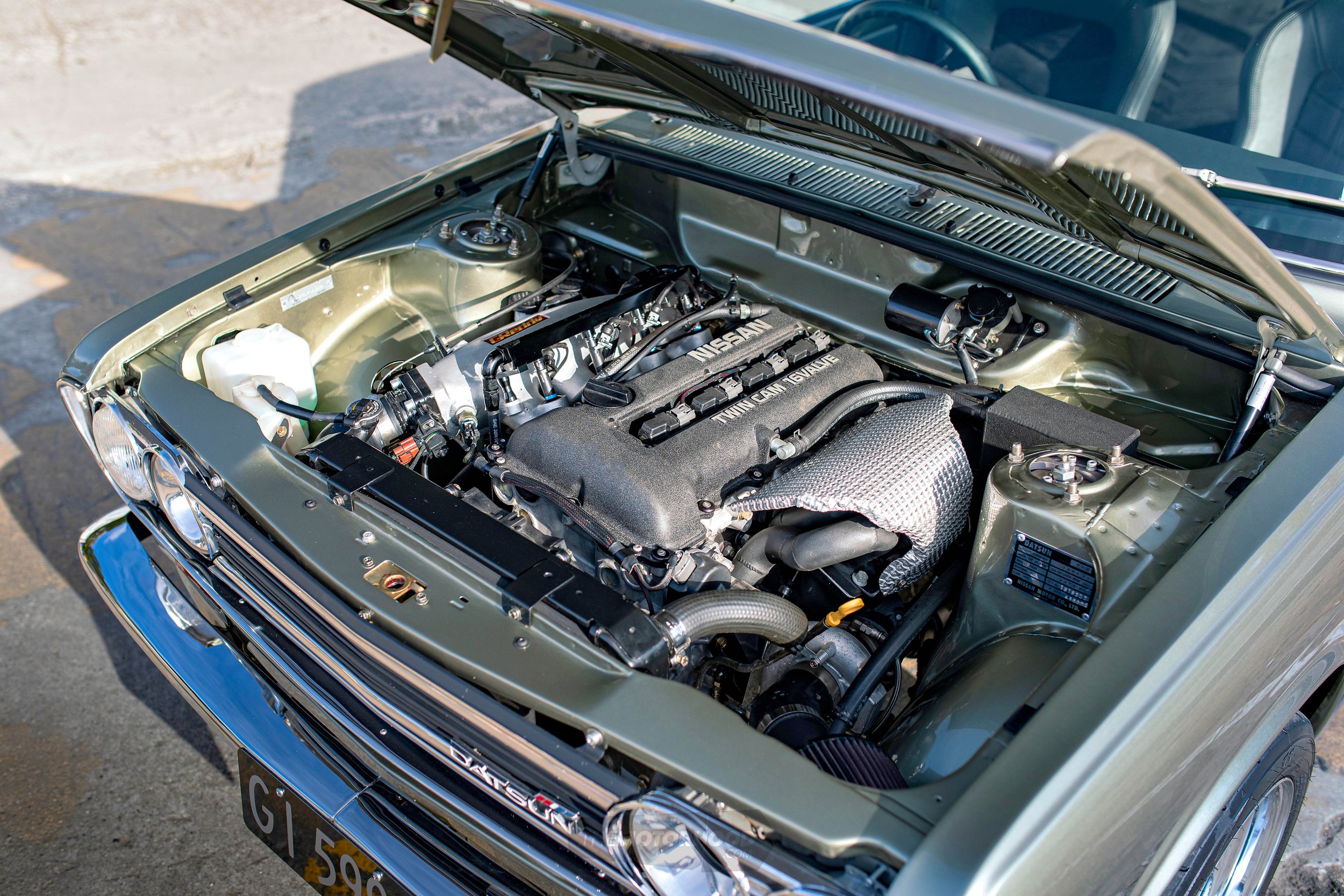
He even built up a couple of Minis while still at high school, from the ground up — it’s pretty easy to see where the fanaticism for a thorough, complete project had its genesis. Even then, “into” is probably an understatement on Andrew’s part. The brothers’ enthusiasm for rattling around in little English cars blossomed into a real grassroots racing effort, with a Riley Elf built to suit pre-’65 regulations providing a bit of low-cost excitement.
“We got out there and had fun with the money that we had; the car was basically more unreliable than it was reliable,” laughs Andrew, “but we’d drag that little Riley over the Kaimais to Bay Park or down to Taupo, and have a bloody good time. I gave up wanting to be a mechanic after lying on too many cold garage floors over those years. It turns out I preferred a nice warm kitchen instead.” Anyone who’s spent a few nights in the shed, flat on their back, skinning knuckles while wrestling with a few rusty old imperial fasteners in the name of fixing British motor vehicles could no doubt empathise, but it’d be a few years before Andrew moved across to the metric life with the Datsun.
Cars took a back seat for a very long time. “I actually got into competitive long-range shooting for a long tenure,” Andrew mentions. “It might seem a different world to cars, but I really enjoyed the mechanical aspect of firearms, and funnily enough a lot of the guys I met shooting also had a bit of a thing with cars.”
Not only that, but shooting is an exacting art, where the devil most definitely lies in the detail, and preparation is key. It’s not too difficult to get a gauge on the fact Andrew is a big fan of getting things exact — or, as he says: “Failing to prepare is preparing to fail.”
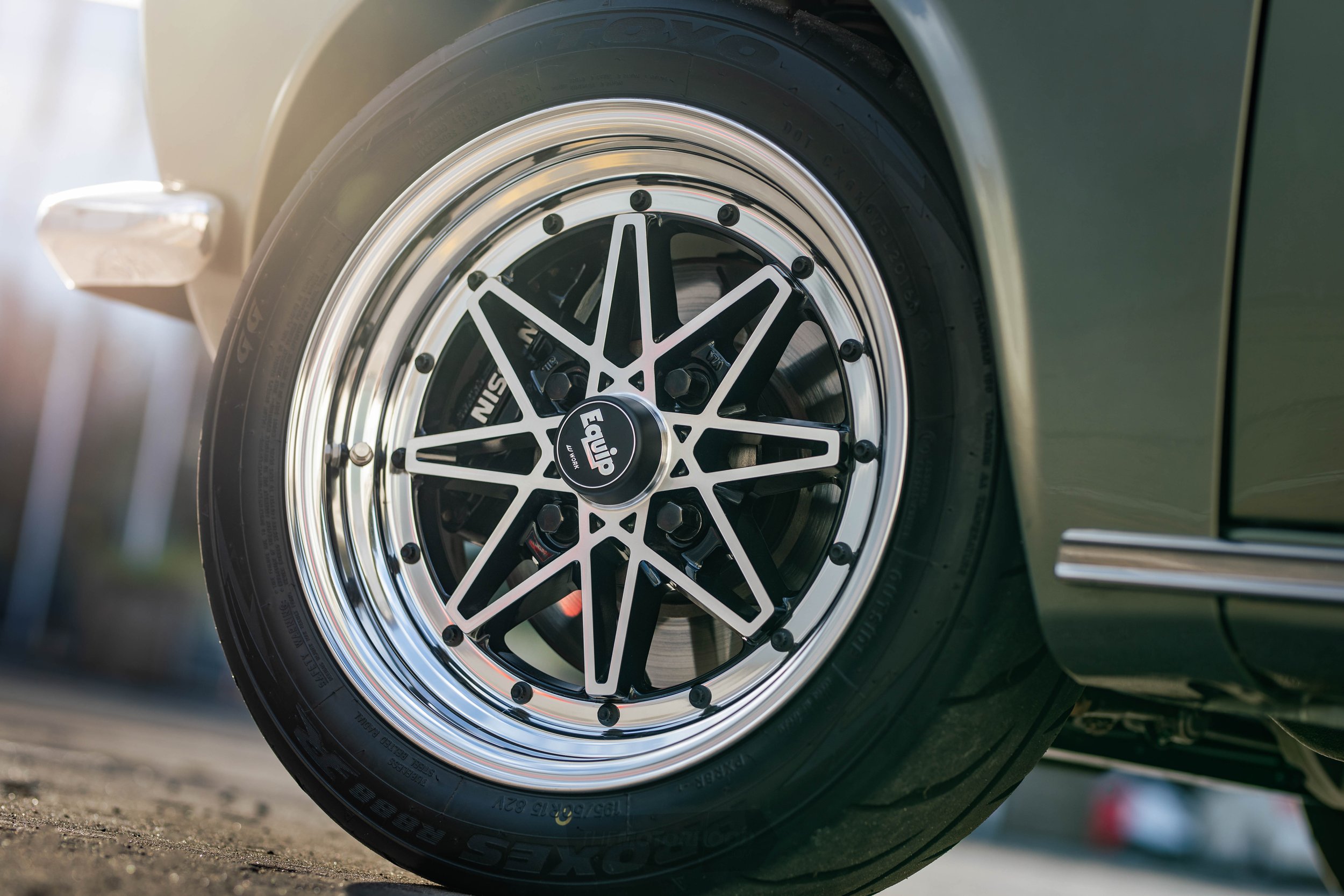
Interestingly, it was one that got away that fuelled the Datsun fascination. “This guy at polytech had a pretty cool Datsun 1600,” Andrew recalls. “He and his old man used to muck around with rallying and this thing was pretty much a road-going race car. It had big Webers on it, it used to scream, it was just wicked. I remember it coming up for sale and he only wanted 1500 bucks. I begged my brother for some money. He said, ‘Nope; it’s too fast; it’s too dangerous,’ and I never got the car. I have always had a thing for a 1600 since that day.”
About seven years ago, a Datsun came back into Andrew’s cross hairs. A chance conversation with his then stepson about a Datsun 510 reignited that smouldering flame, and life had pretty much whipped itself into a shape where acquiring was a viable scenario. As we hear often, Andrew “just thought I’d have a look on Trade Me”. Then, before he knew it, there was a trailer hitched and he was on the road to Palmy to pick up a Datsun.
“The guy had started it as a bit of a marathon rally car build, for those classic rallies,” says Andrew, recounting his arrival at the seller’s place. While the car wasn’t an oil painting, the ingredients seemed pretty good on paper. “It wasn’t registered and it was in bits, but the guy had aspirations of running the SR20 in it, with the Datsport gear, R200 diff, but it still had a lot of the difficult little bits missing.”
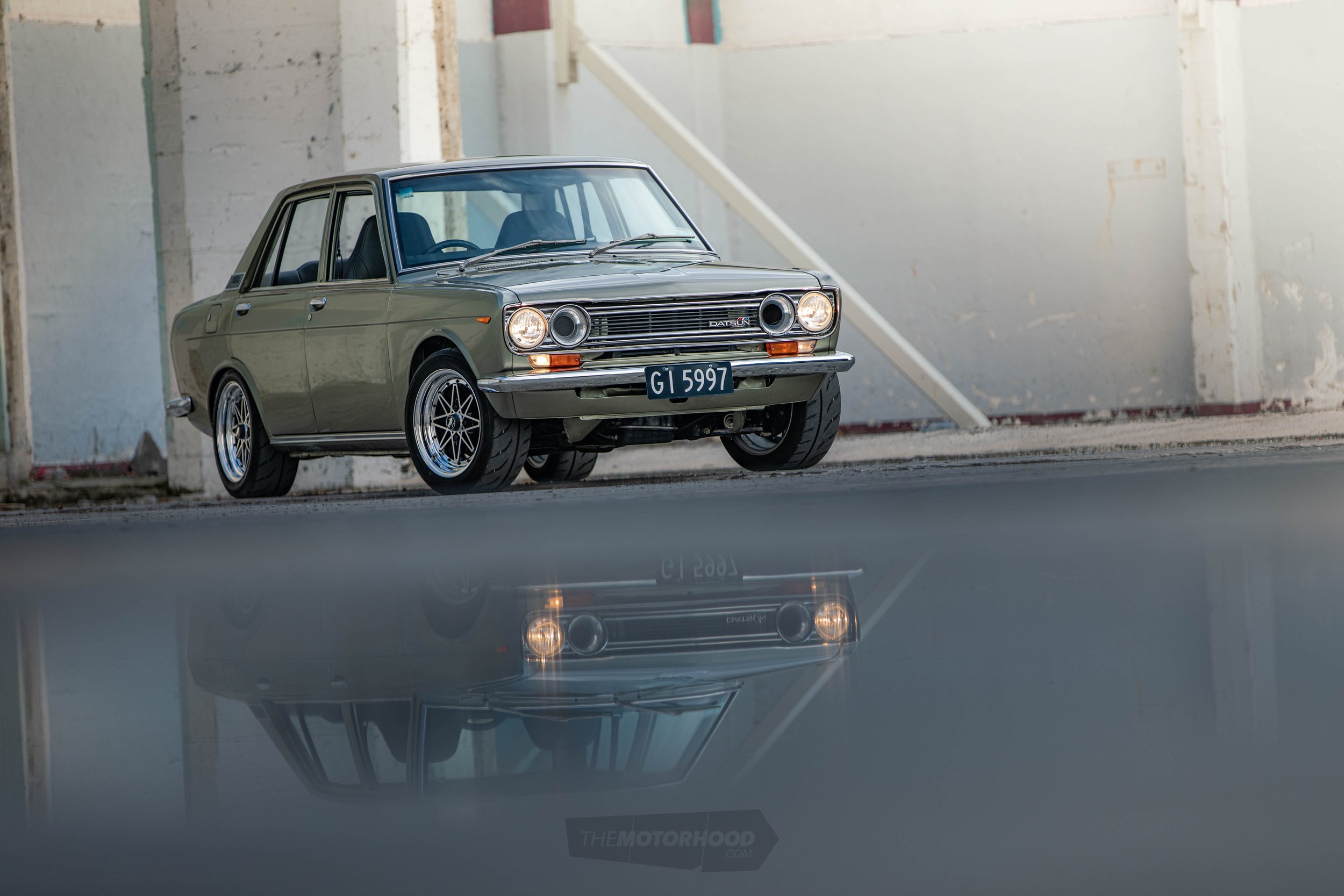
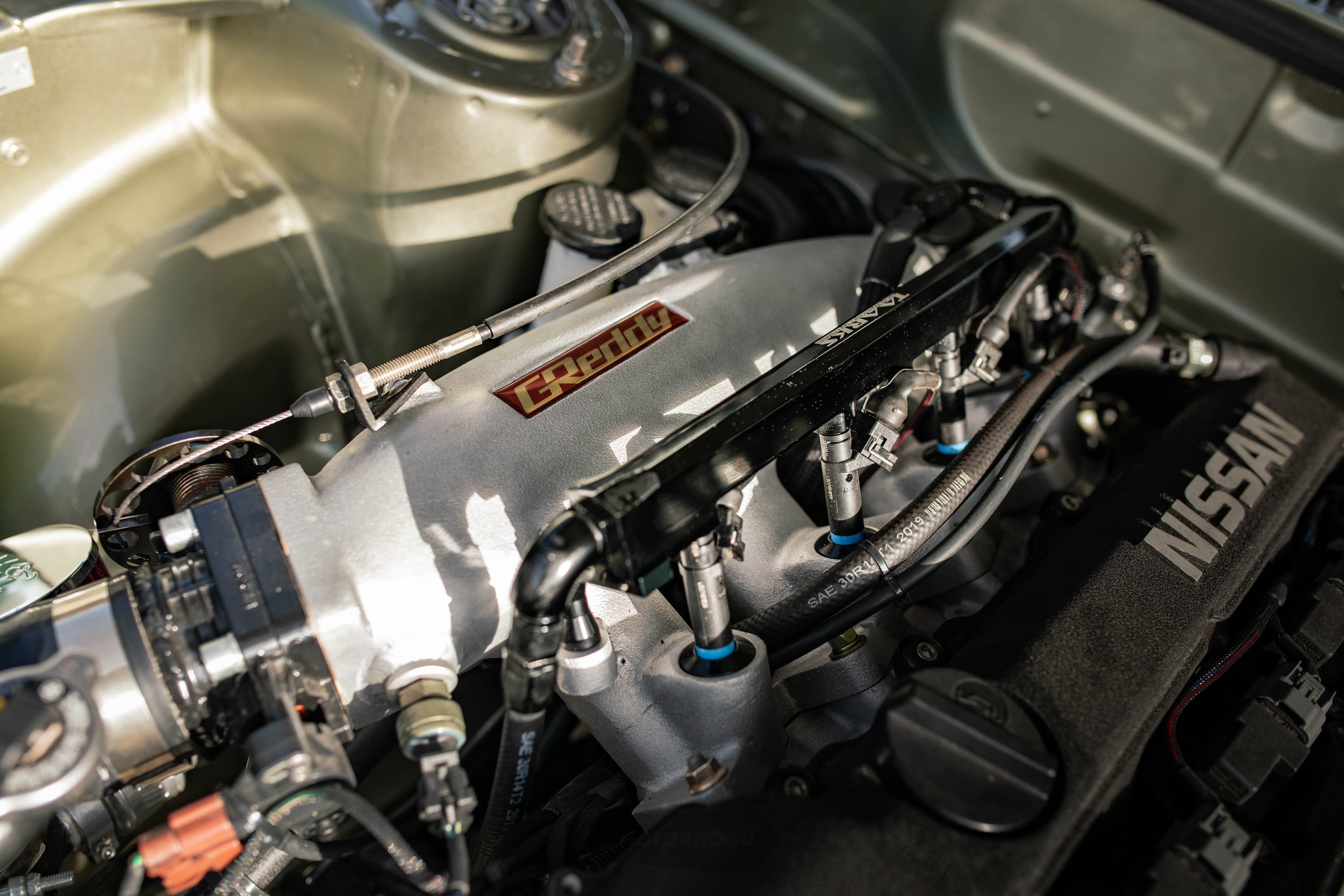
Although he didn’t know it at the time, Andrew was soon to meet the patron saint of the Datsun project: local Datsun nut ‘Tony K’.
“I had the car out the back of work, and a guy from the testing station over the fence asked me if I knew Tony. [He said] if I didn’t, I’d better get to know him,” Andrew grins. “It turns out that was one of the best things that happened to this build; he’s helped me hugely through it, with advice and sourcing parts. Without him the car wouldn’t be how it is; his 30 years of experience with these cars has been invaluable.”
Although that blacktop SR20DET looks pristine now, it was quite different when the build began.
“The engine builder reckoned it was one of the worst SR20s he’d ever seen,” says Andrew. Regardless, the block’s been bored 20-thou over, and stocked with strong components from Carrillo and ARP, mainly in the name of longevity. Peak power was never the absolute goal, with quality and drivability taking precedence. The gen-you-wine GReddy inlet plenum pays homage to Andrew’s ‘do it right’ mantra. A Sinco manifold hanging off the other side provides flow to a Steve Murch–fettled TD05, a combo Andrew reckons gives it a punchy, linear power curve.
None of it is accidental, as Andrew explains. “My absolute end goal was a car with modern components. You can turn the key any time, and go and drive it without worrying. But visually, I wanted it to look like a very, very nice 1600 you might’ve seen on the road in the late ’80s — not stanced, no crazy flares. It had to be just right; not too showy.”

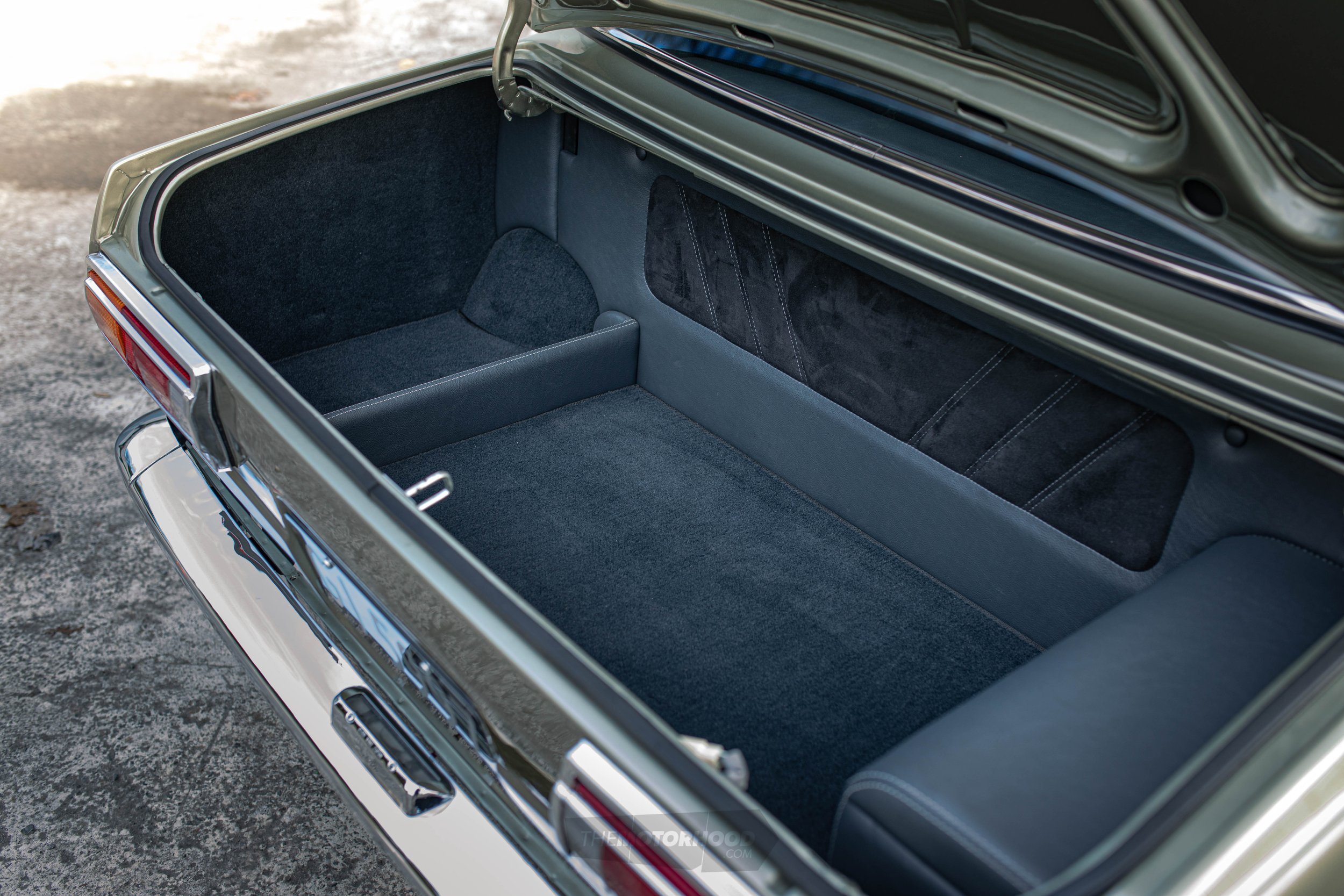

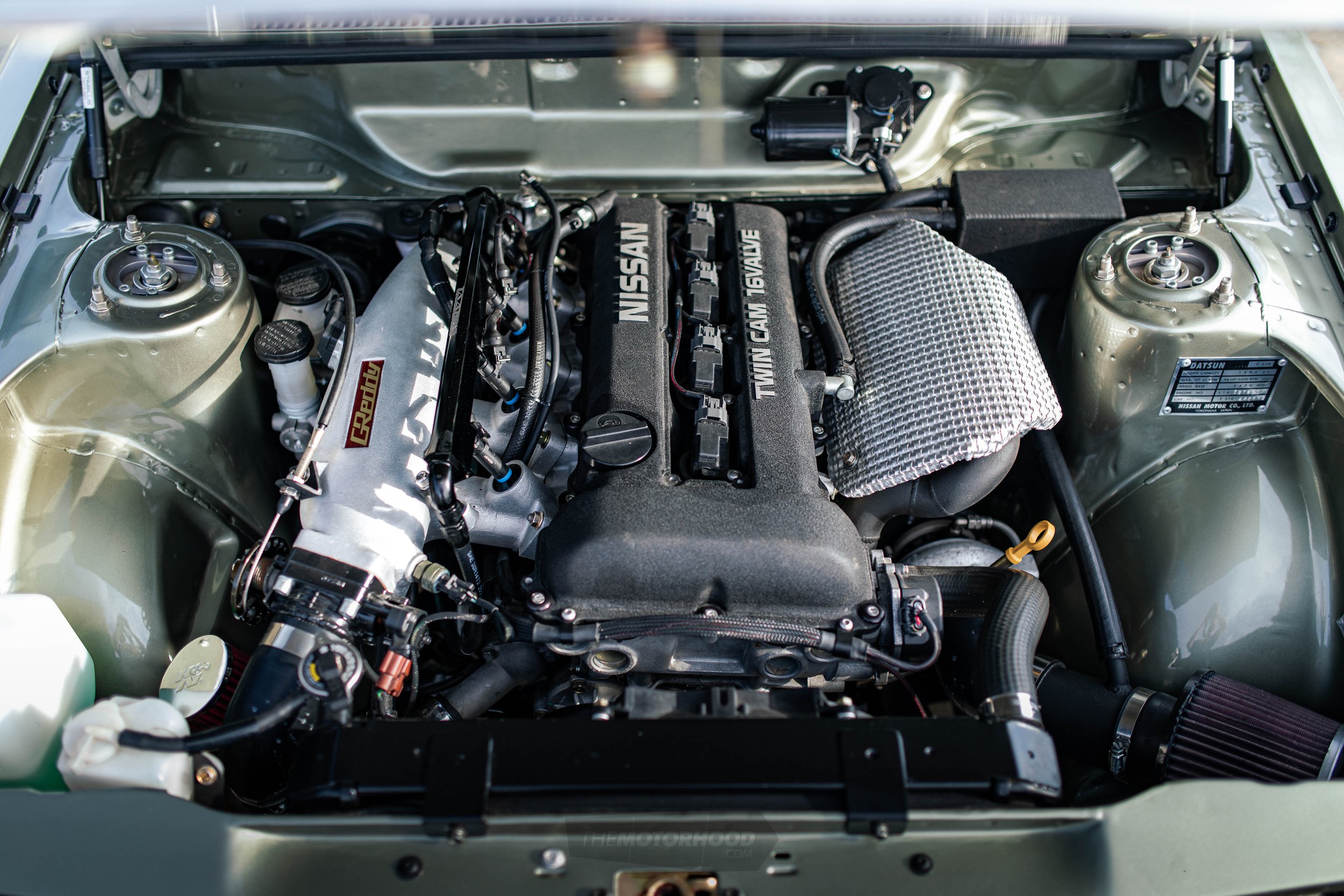
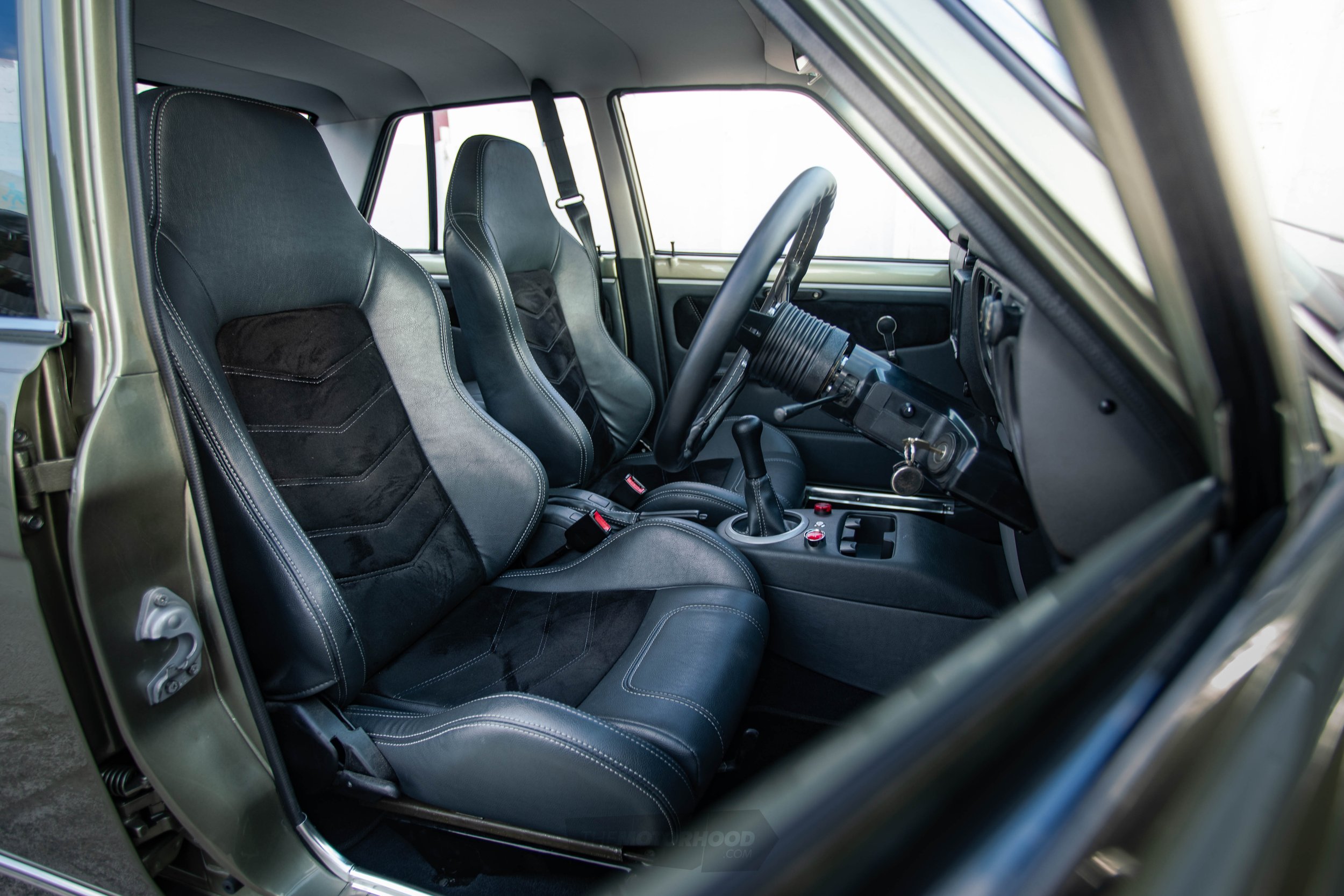
That colour on the Datsun’s arrow-straight flanks? It might look familiar, especially if you’ve got a passing interest in Nissans. The boys at King Street Auto Bodies in Frankton massaged the 1600’s wobbly panels, setting the panel gaps and ultimately laying in a coat of Nissan JW0, better known as millennium jade, made famous by the ultra-rare R34 GT-R Nur special edition. On the Datsun, it just sits right. Modern colours rarely complement boxy ’70s design, but the shimmering light green emphasises every swage and curve of the small sedan, showcasing design elements that otherwise seem invisible. Restored brightwork by SSS Restorers in Mexico — of all places — finishes the aesthetic, all hunched over a set of 15-inch Work Equip 03s.
With such a sorted engine package and a classically understated exterior, it’d be a shame not to include an interior refresh, right? On peering through the window we see the centre console sticking out like a sore thumb — this isn’t something the 1600s had as standard. It’s massively surprising that it’s actually repurposed from a Suzuki Swift, and 1600 nerds will also notice the handbrake relocated to the centre of the cabin, atop the tunnel.
“Overall, it’s inspired by the more modern cars I’ve driven,” says Andrew, “but I’ve taken a lot of cues from American muscle car builds.” The trim reflects the pro-touring aesthetic, with modern, neutral tones and contemporary trim techniques applied to the door trims and reclinable buckets.
When you see Andrew behind the wheel, it’s pretty clear the Datsun’s hit the brief, and it’s a point-blank bullseye, generating a passing lane-sized grin across his face every time he steps on the loud pedal. This is pocket-sized restomodding at its finest, frosted with a liberal helping of impeccable detail. This is the perfect balance, melding tough, reliable mechanicals with the timeless, iconic style of the Datsun 1600. It might be boxy — but it doesn’t deserve to be just popped into a box.
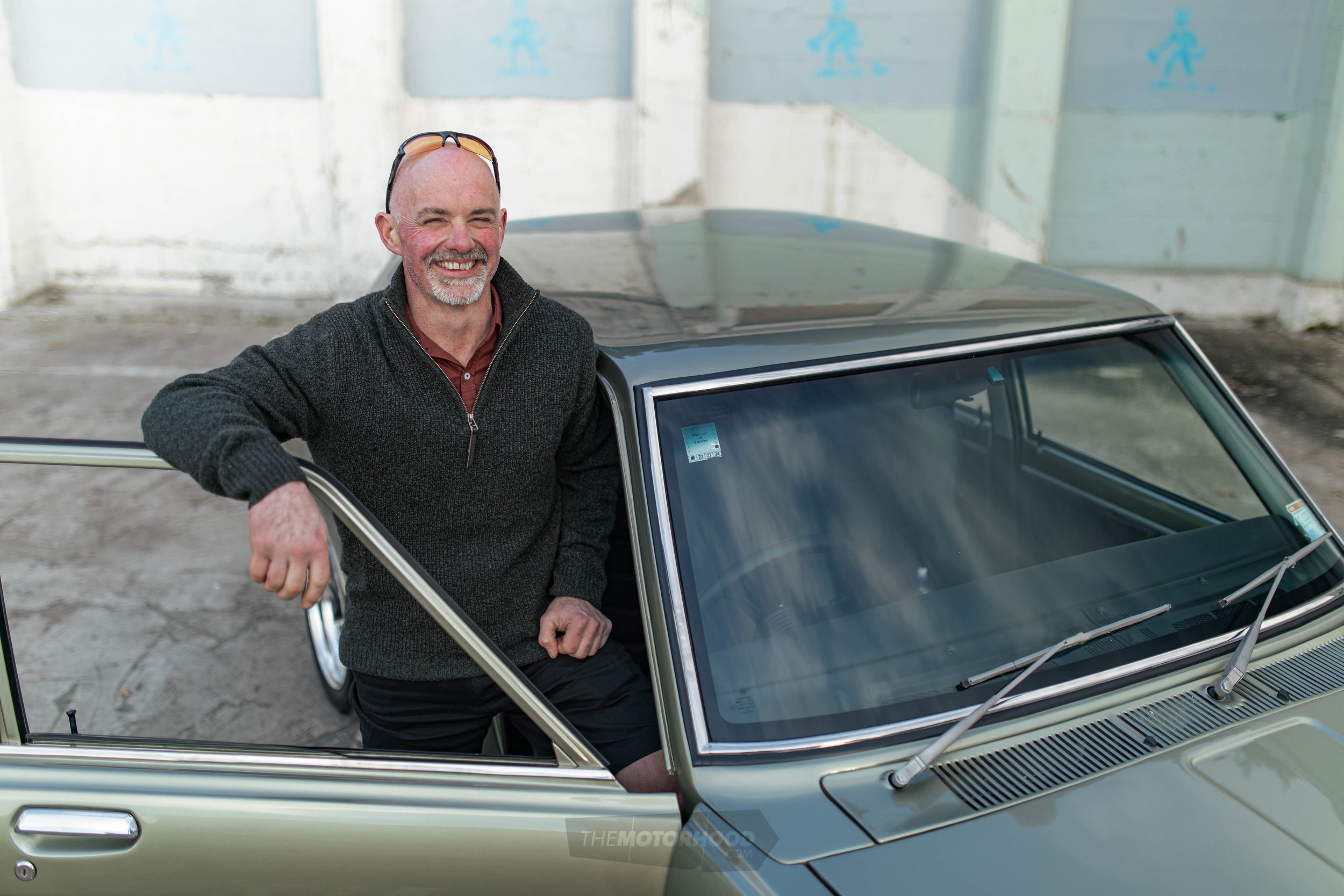
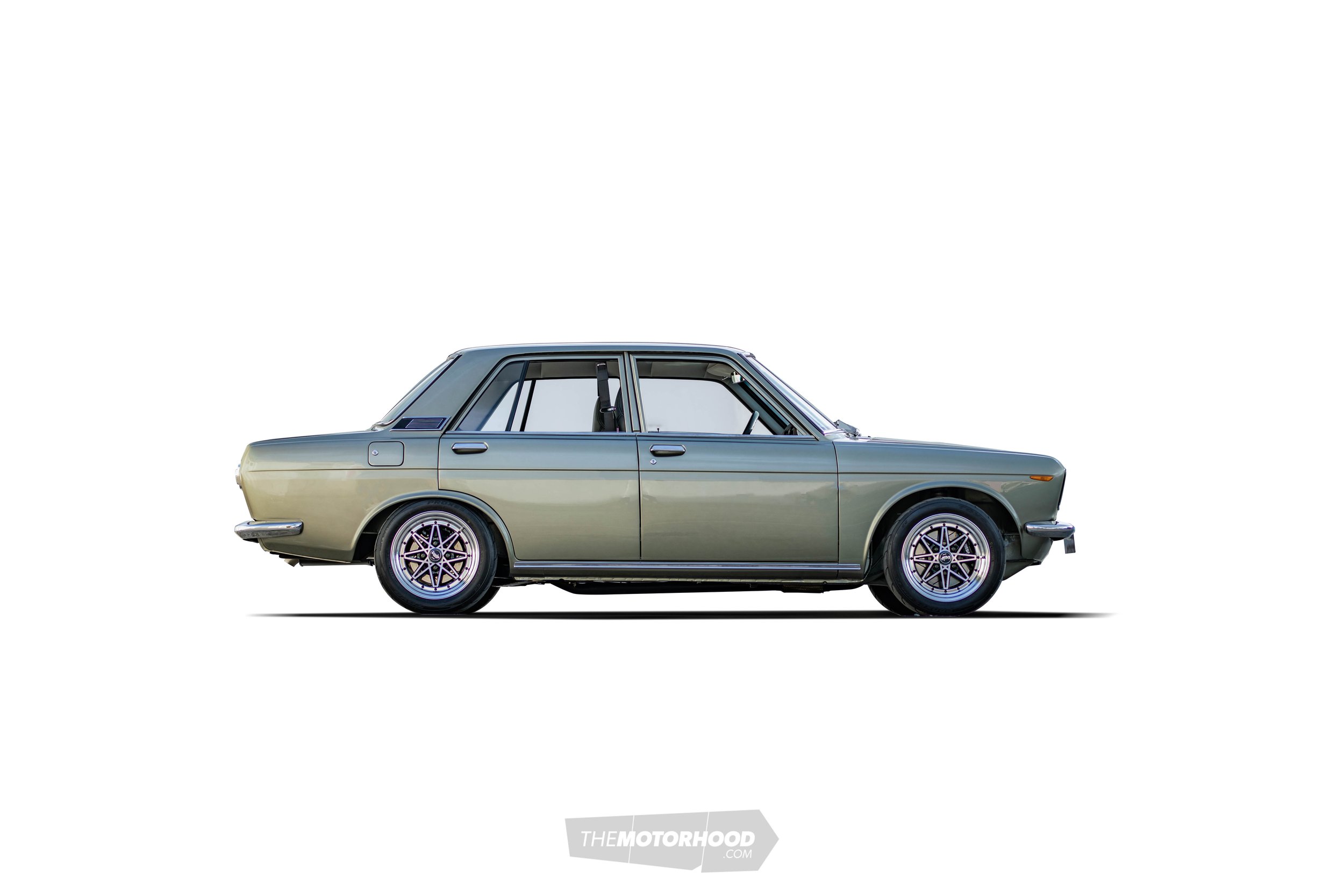
This article originally appeared in New Zealand Performance Car issue 293





